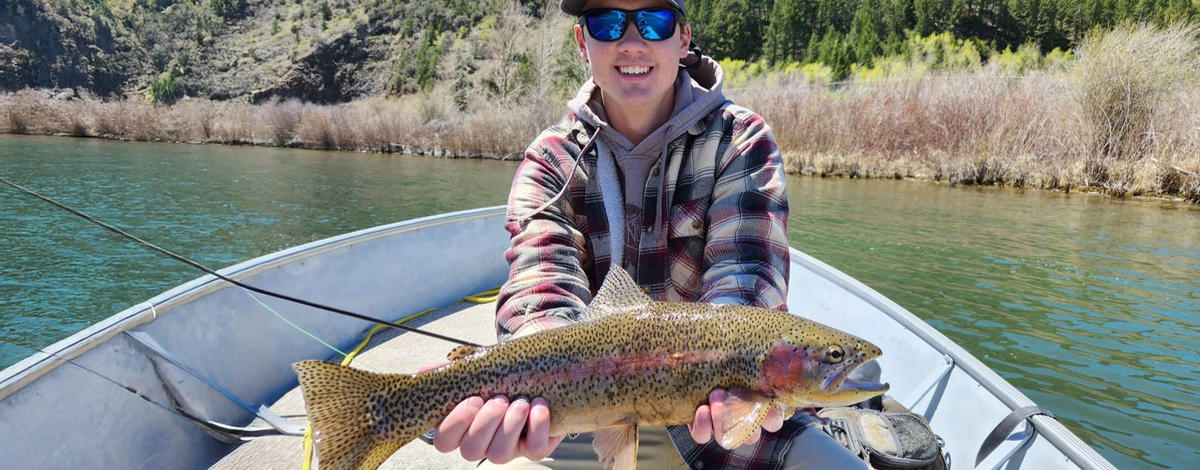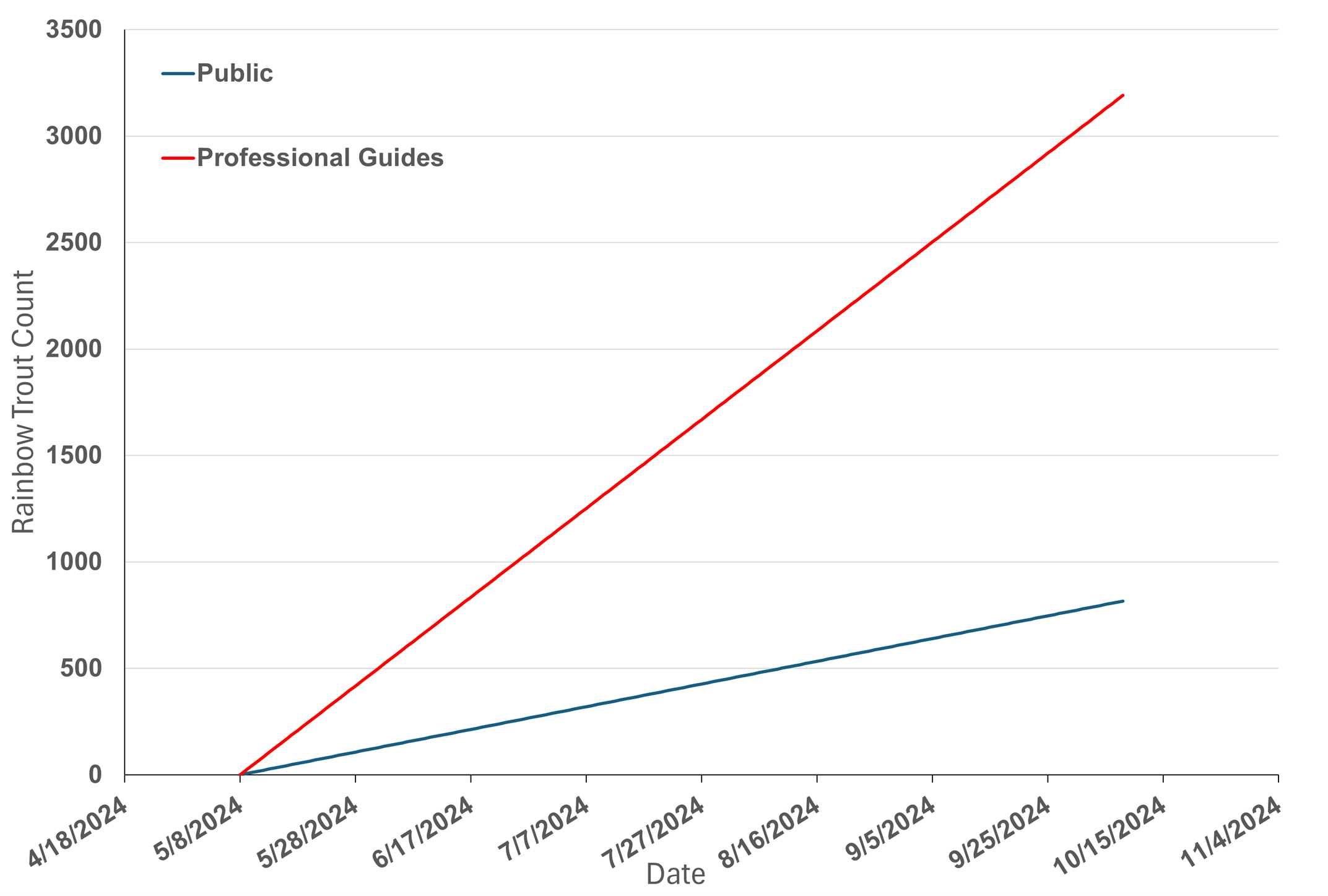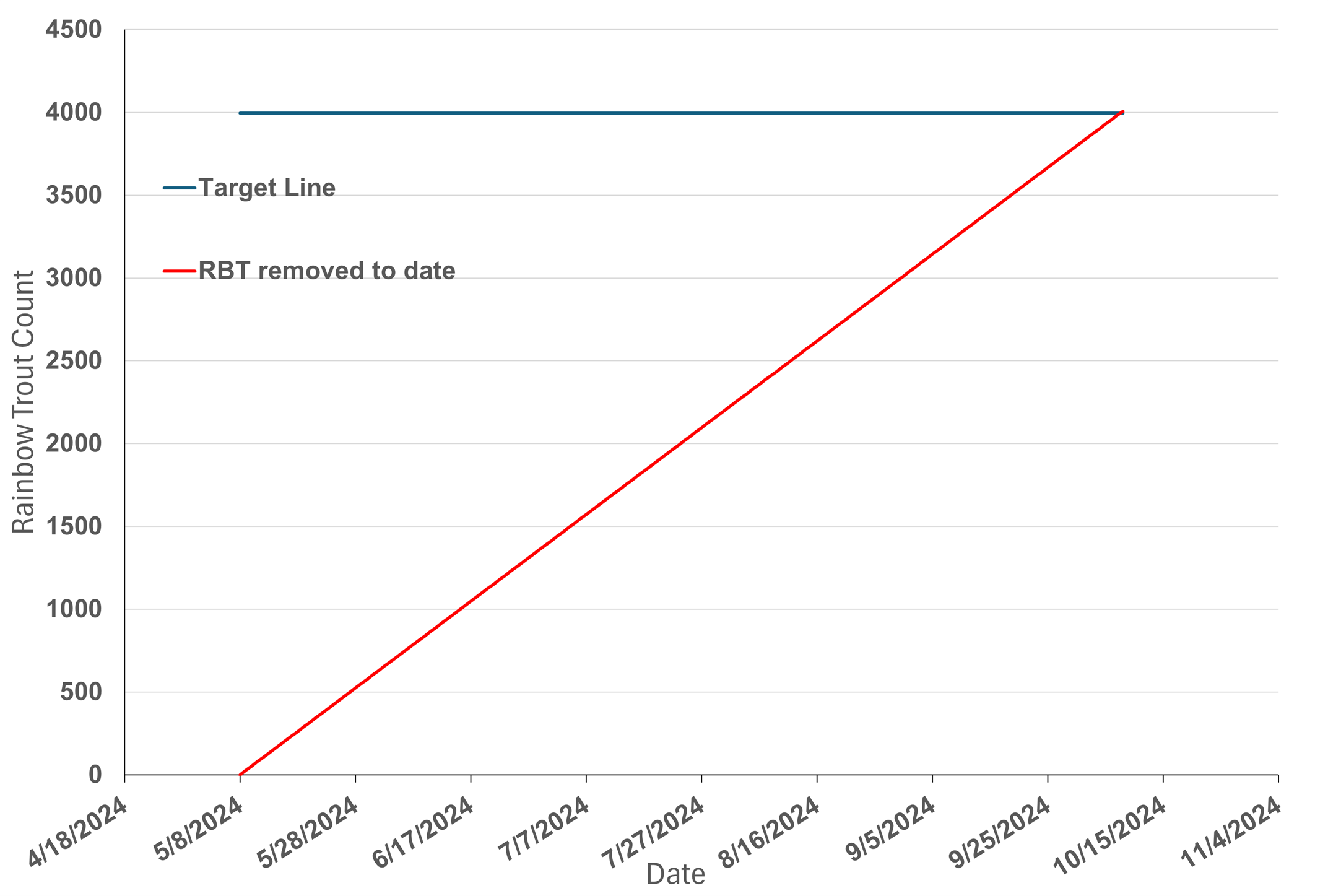This year marks the fourth year of the five-year evaluation into whether the manual removal (hereafter suppression) of Rainbow Trout Oncorhynchus mykiss (RBT) can positively benefit the abundance and genetic structure of Yellowstone Cutthroat Trout O. virginalis bouvieri (YCT) in the South Fork Snake River (SFSR). Investigations into the feasibility of suppression of RBT in the mainstem SFSR using a combination of boat electrofishing and angling harvest began in 2018 and implementation of the program started in the spring of 2021. The goal of the program is to annually remove 30% of the RBT present. The population estimate, 30% target number, and true number of RBT removed have varied from 2021-2024 (Table 1).

An update on 2024 rainbow trout suppression along the South Fork Snake River

To achieve suppression goals IDFG used boat electrofishing to capture and remove RBT from the SFSR in 2021 through 2023. Boat electrofishing occurred while RBT were spawning in the mainstem SFSR from early-April through May. In 2024, unlike previous years, the program relied entirely on angler harvest. The change in suppression methodology occurred in response to comments by the outfitting and guiding community regarding the use of electrofishing to remove RBT. Idaho Department of Fish and Game was responsive to comments and agreed to withhold electrofishing efforts if our suppression targets could be met through harvest alone.
In the autumn of 2023, IDFG estimated 701 RBT/mi. (± 176) in the Conant monitoring reach and a total of 13,319 RBT from Palisades Dam downstream to Dry Canyon. To meet our goal of annually removing 30% of RBT present in the upper portion of the SFSR (i.e., where RBT are most prevalent) our suppression target was 3,996 RBT for 2024. In 2024, anglers have submitted 4,007 RBT to the program, surpassing our suppression target by 11 fish. The general public has harvested 816 RBT and guides and outfitters have harvested 3,191 RBT (South Fork Lodge: 2,967; The Lodge at Palisades Creek: 224; Figures 1,1b). The achievement of reaching the suppression target of 3,996 RBT without the use of boat electrofishing was primarily accomplished by professional fishing guides, and all anglers benefitted by the hard work and efforts of those guides who assisted in reaching the target. Without the efforts of the guides that participated, IDFG would have had no choice but to use electrofishing boats in September and October to remove RBT until the suppression target was reached. The Idaho Department of Fish and Game is grateful for the collaboration and efforts of those in the guiding community who assisted with this evaluation and recognize them as conservation leaders.
Meeting our suppression goal without the use of boat electrofishing emphasizes the important contribution from outfitters and the anglers that contribute to the RBT Harvest Incentive Program and is a poignant example of how all anglers can make a difference and contribute to YCT management on the SFSR. Idaho Department of Fish and Game is committed to the SFSR Harvest Incentive Program and will continue to implant a subset of RBT with reward tags from $50 to $1,000.
The evaluation into whether removing RBT from the SFSR benefits YCT populations will continue in 2025. Similarly to 2024, IDFG is willing to rely on RBT harvest by the angling and guiding community in 2025. However, due to an increase in population abundance of RBT in 2024 the suppression target for 2025 will be 8,561 RBT, which is substantially higher compared to 2024 and will require a more concerted effort by the entire angling community. Idaho Department of Fish and Game will need to use boat electrofishing if the suppression target is not achieved by angling effort alone
The South Fork Snake River is an incredible fishery in the Upper Snake Region, supporting a diversity of wild trout. We are optimistic this year’s suppression efforts will make significant progress toward the goals outlined in the IDFG Fisheries Management Plan for the SFSR to protect YCT genetic integrity and maintain YCT dominance and persistence in this amazing river.


